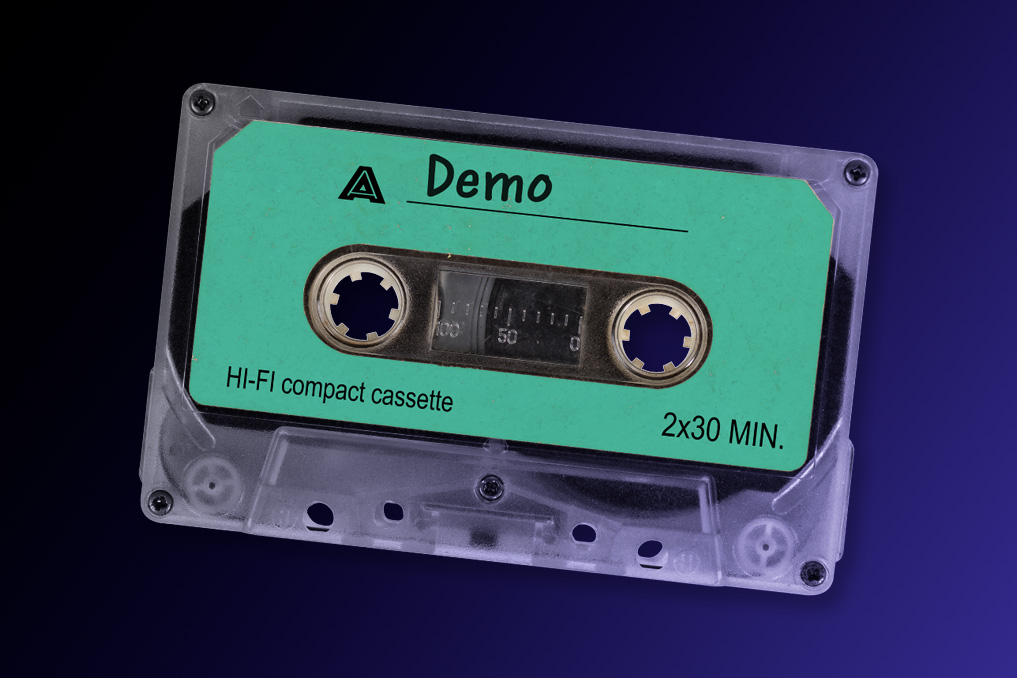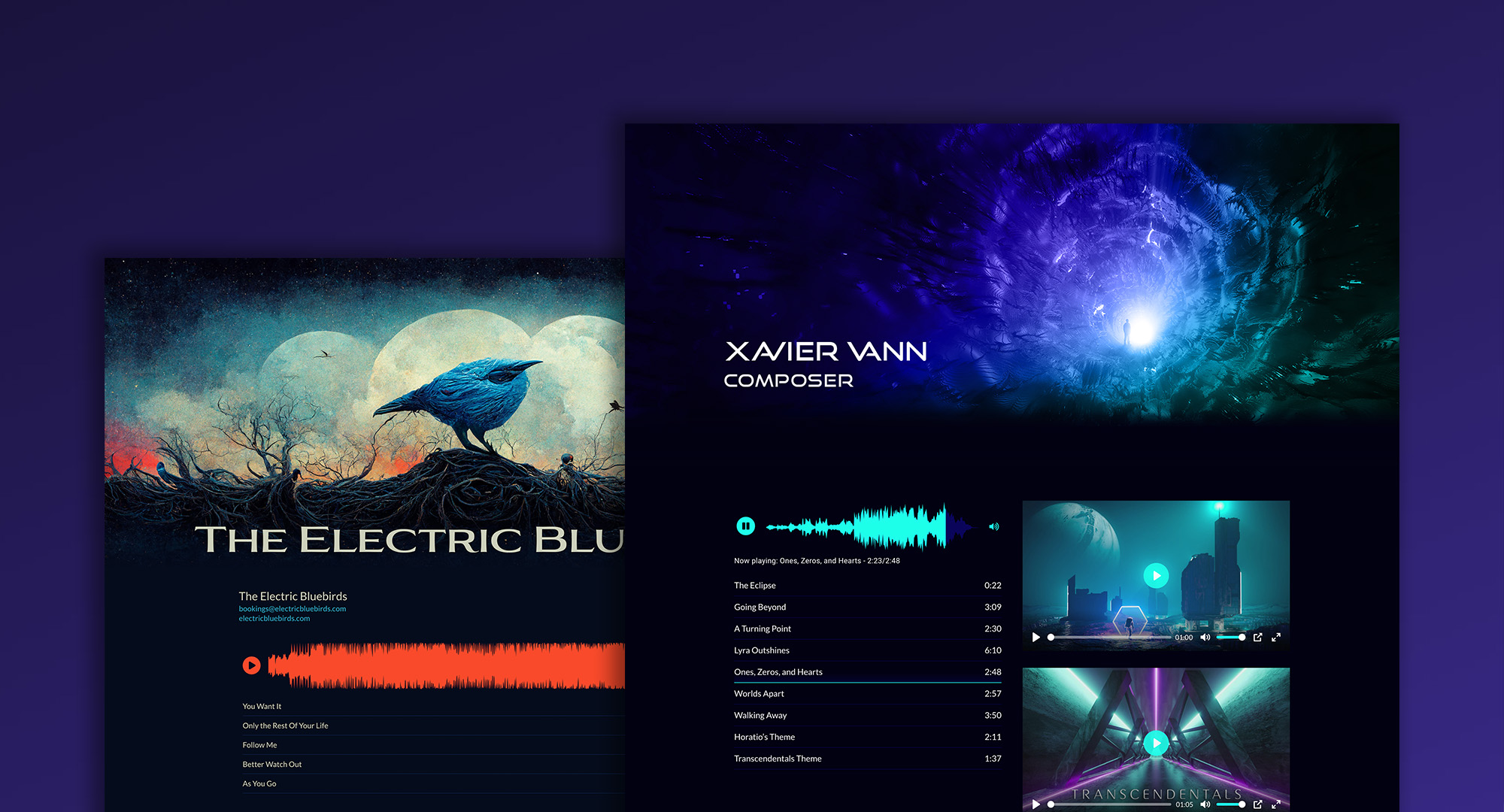Although this article is focused on music demo reels, the basic principles can be applied by any audio or video artist showcasing their work. You can read part two of this series here: Building a killer music demo reel — Part 2: Sequencing
What’s a music demo reel, and why do I need one?
A demo reel is a portfolio of your audio and/or video work used to get hired for a project. Most freelance audio and visual artists use them, including composers, sound designers, voiceover artists, VFX artists, singer-songwriters, DJs, and more. Although demo reels go by different names based on the industry (EPKs [electronic press kits], sizzle reels, samplers, playlists, etc.), in this article, we’ll refer to them as demo reels to keep it simple.
Because your demo reel acts as your resume, it plays a critical role in landing work. For example, in a conversation with a filmmaker who may potentially hire you to write custom music for their project, they’ll inevitably ask for a sample of your work. So how do you decide what to send them, and in what format? We’ll answer these questions below and give you some golden nuggets of knowledge from top industry composers, agents, and music supervisors.
Carefully choosing which tracks to showcase is half the battle
But, before we continue, here are a few things you should not do when compiling and sending a music demo:
- Don’t send a CD or USB thumb drive. That may seem obvious in today’s digital age, but we feel it’s worth a reminder. The best way to get your music in front of someone is a link to something they can easily stream on any device. And speaking of streaming:
- Don’t make them download anything. Directors, agents, and music supervisors are busy people. Don’t make them download ZIP files, and don’t send links to WAV files. What if they’re out of the office and can only access your reel on their phone? The wrong format could cost you a big opportunity.
- Don’t use a file delivery service (even if it allows streaming). Using something like WeTransfer, Dropbox, or Google Drive is a great way to make a ho-hum impression. You’re a unique artist with a story, and Dropbox won’t help you tell that story.
- Don’t just add a bunch of your favorite tracks to your website or a SoundCloud link. Carefully choosing which tracks to showcase is half the battle, and the order in which you arrange them is the other half. More on music selection later.
Now that we have the major “don’ts” out of the way, let’s look at the difference between general and targeted demo reels.
The general reel vs. the targeted pitch
Before doing anything else (like digging through your entire repertoire), you must first consider the purpose of a particular demo reel. When you boil it down to the basics, there are general reels and targeted reels.
A general reel consists of several tracks demonstrating your unique voice and talent. This is a “best of” compilation. In contrast, a targeted pitch is a reel that’s tailored to a specific project.
Your general reel is perfect for any situation where someone essentially wants to get to know you and your work, for example:
- your website or email signature
- someone you met at a conference who said, “send me your stuff; I’d love to hear it”
On the other hand, a targeted reel is best for pitching for a specific project or opportunity, such as:
- submitting to a music festival that has a particular focus (e.g., alt country)
- an agent/director/showrunner who thinks you might be a good fit for a TV show, film, or video game
There’s also another type of targeted pitch called a speculative demo (“spec” demo) that we’ll cover in a separate article.
Now that you’ve determined what type of reel you need, it’s time to choose which tracks to showcase.
Music selection
Let’s start with the obvious: you only want to present your most high-quality, outstanding work and demonstrate what you do best. So here are some general points to keep in mind while choosing your tracks:
Don’t try to be a jack of all trades (especially in your general reel).
People hire you for what you’re amazing at and generally aren’t interested in someone who does everything. When someone is listening to your reel, they want to hear where you excel. If they want to hear additional samples, they’ll ask.
Avoid repetition if it becomes monotonous.
For instance, having several fast-paced action cues in a row is fine if they’re different and have enough interesting elements to keep the listener’s attention. You don’t want to lose the listener too soon because every track has the same feeling or energy.
Just because one client didn’t like it doesn’t mean someone else won’t love it.
Don’t shy away from adding rejected cues or demo tracks to your reels! It might be precisely what your next client is looking for.
For a general reel, your goal is to showcase your best works, not all your works.
Your goal is to showcase your best works, not all your works
In a targeted pitch, you’ll need to put more thought into your track selections and consider the project you’re pitching for. In a targeted pitch, you’ll often have details about the project from a creative perspective to guide you with your track selection. What’s the story? What’s the general mood/tone the project is going for? Does the director have a musical style in mind, or maybe temp music?
A targeted pitch is an opportunity to showcase a wider variety of your work, but don’t forget that quality is still key. Also, be careful about pitching for projects requiring musical styles you don’t enjoy. You may come to regret winning that gig!
Now you know why a demo reel is an essential tool in landing gigs and how to select the best tracks for different types of pitches. Watch this blog for more helpful guides on track sequencing, production quality, and design.
Need to send a demo fast? Sign up for your free 14-day ReelCrafter trial and see how easy it is to create a stunning reel!
Check out the rest of our music demo reel series:
Building a killer music demo reel — Part 2




